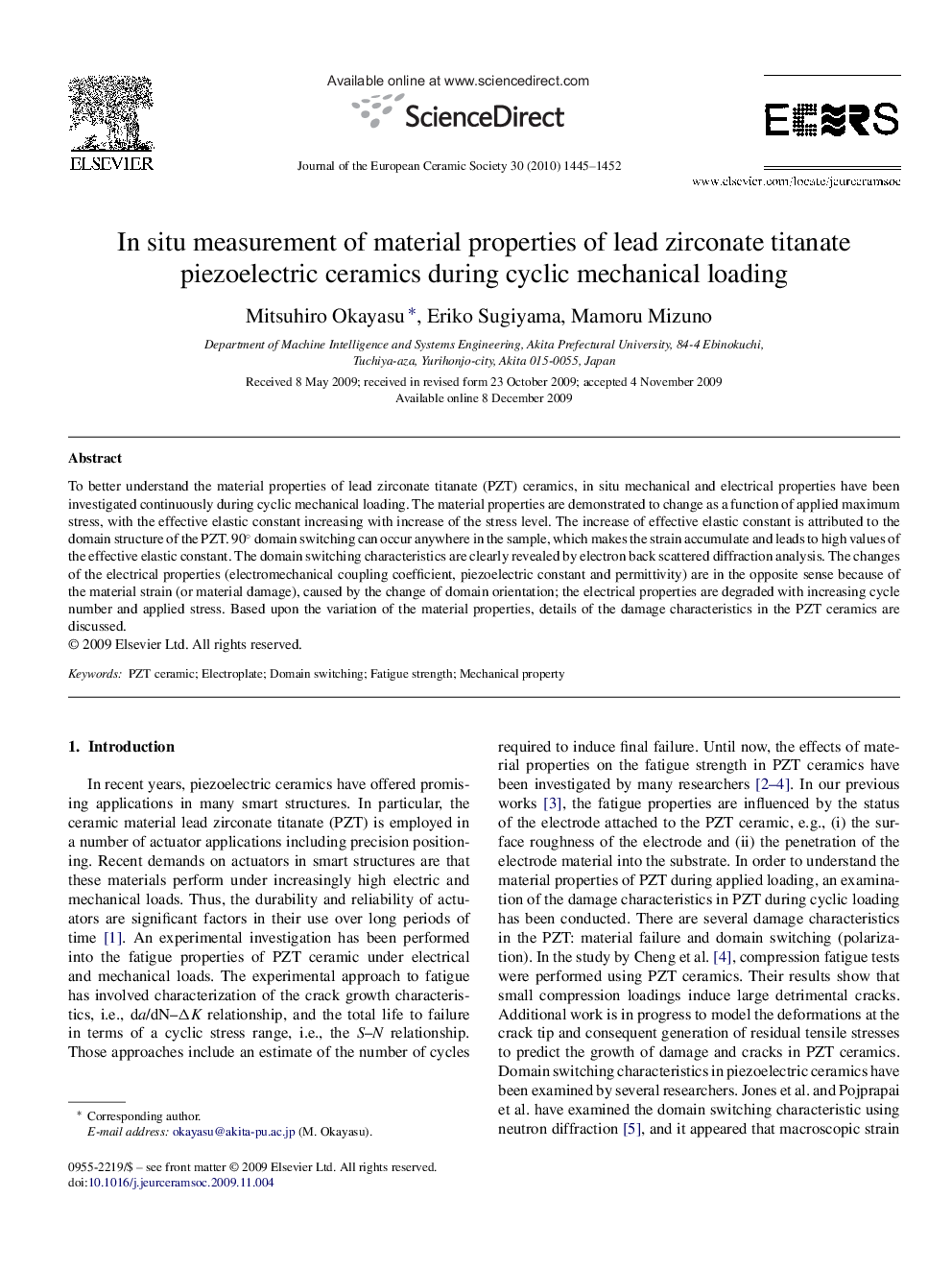| Article ID | Journal | Published Year | Pages | File Type |
|---|---|---|---|---|
| 1474790 | Journal of the European Ceramic Society | 2010 | 8 Pages |
To better understand the material properties of lead zirconate titanate (PZT) ceramics, in situ mechanical and electrical properties have been investigated continuously during cyclic mechanical loading. The material properties are demonstrated to change as a function of applied maximum stress, with the effective elastic constant increasing with increase of the stress level. The increase of effective elastic constant is attributed to the domain structure of the PZT. 90° domain switching can occur anywhere in the sample, which makes the strain accumulate and leads to high values of the effective elastic constant. The domain switching characteristics are clearly revealed by electron back scattered diffraction analysis. The changes of the electrical properties (electromechanical coupling coefficient, piezoelectric constant and permittivity) are in the opposite sense because of the material strain (or material damage), caused by the change of domain orientation; the electrical properties are degraded with increasing cycle number and applied stress. Based upon the variation of the material properties, details of the damage characteristics in the PZT ceramics are discussed.
